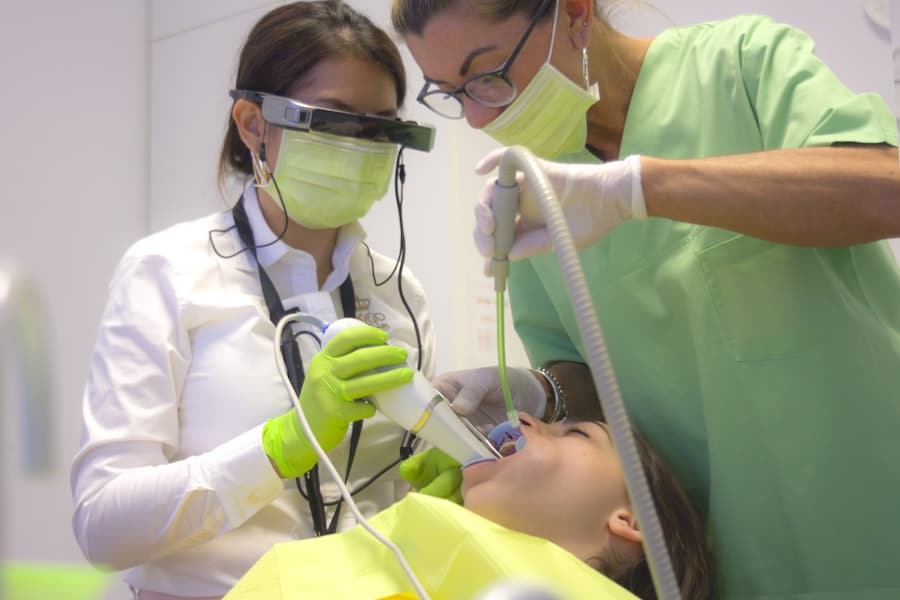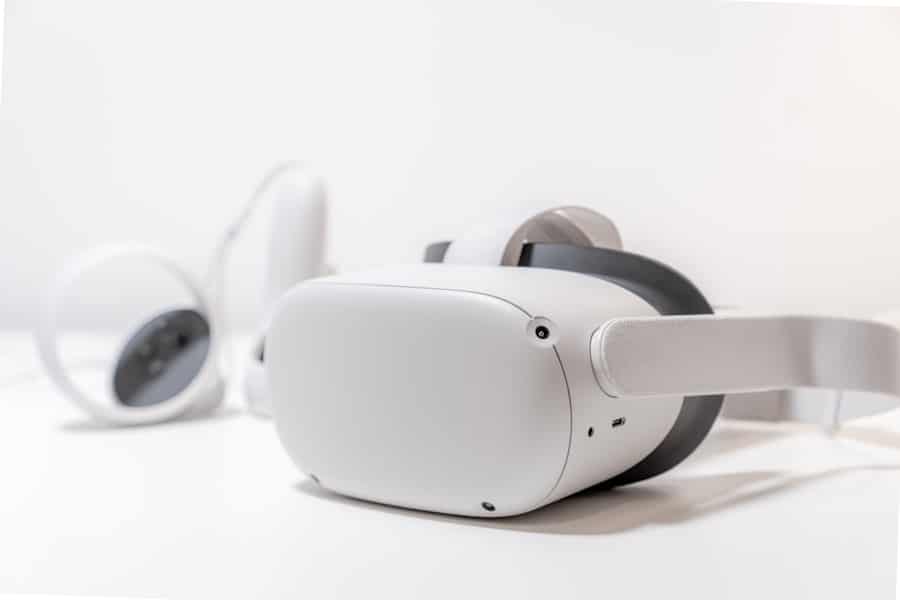Augmented Reality (AR) has emerged as a transformative technology in various sectors, and its application in factory inspections and maintenance is particularly noteworthy. By overlaying digital information onto the physical world, AR enhances the way technicians and engineers interact with machinery and equipment. This technology allows for real-time data visualization, enabling workers to make informed decisions quickly and efficiently.
As factories increasingly adopt smart technologies, the integration of AR into their operations is becoming essential for maintaining competitiveness in a rapidly evolving industrial landscape. The concept of AR in factory settings is not merely about visual enhancements; it represents a paradigm shift in how inspections and maintenance tasks are approached. Traditional methods often rely on manual checks and paper-based documentation, which can be time-consuming and prone to human error.
In contrast, AR provides a dynamic interface that can display critical information such as schematics, operational data, and maintenance histories directly in the technician’s line of sight. This capability not only streamlines processes but also significantly reduces the likelihood of mistakes, ultimately leading to improved safety and efficiency in factory operations.
Key Takeaways
- AR technology enhances factory inspections and maintenance by providing real-time data and visual guidance to workers.
- Advantages of AR in factory inspections and maintenance include increased efficiency, reduced downtime, and improved accuracy in identifying issues.
- Challenges and limitations of AR in factory inspections and maintenance include high initial costs, technical complexity, and potential resistance from workers.
- Case studies show successful implementation of AR in factory inspections and maintenance, resulting in improved productivity and cost savings.
- Future developments in AR for factory inspections and maintenance include advancements in wearable AR devices, AI integration, and remote assistance capabilities.
Advantages of AR in Streamlining Factory Inspections and Maintenance
One of the most significant advantages of AR in factory inspections is its ability to enhance accuracy and speed. Technicians equipped with AR glasses or mobile devices can access real-time data while keeping their hands free to perform tasks. For instance, when inspecting a complex assembly line, a technician can view step-by-step instructions overlaid on the equipment itself, ensuring that every component is checked according to the manufacturer’s specifications.
This immediate access to information minimizes the time spent searching for manuals or documentation, thereby accelerating the inspection process. Moreover, AR facilitates remote collaboration, which is particularly beneficial in large manufacturing facilities or during maintenance tasks that require specialized knowledge. With AR technology, experts can guide on-site technicians through complex procedures without needing to be physically present.
For example, a technician in a factory in Germany could receive real-time assistance from an expert located in Japan, who can see what the technician sees through their AR device. This capability not only enhances problem-solving efficiency but also reduces downtime, as issues can be addressed more swiftly with expert guidance.
Challenges and Limitations of AR in Factory Inspections and Maintenance
Despite its numerous advantages, the implementation of AR in factory inspections and maintenance is not without challenges. One significant hurdle is the initial investment required for AR technology. The cost of AR hardware, such as smart glasses or headsets, along with the software needed to create and manage AR content, can be substantial.
For many manufacturers, especially smaller enterprises, this upfront expenditure may pose a barrier to adoption. Additionally, ongoing maintenance and updates for AR systems can further strain budgets. Another challenge lies in the integration of AR with existing systems and workflows.
Factories often operate on legacy systems that may not be compatible with modern AR applications.
Furthermore, there is a learning curve associated with adopting new technologies.
Employees may require extensive training to become proficient in using AR tools effectively, which can temporarily disrupt operations as workers adapt to new processes.
Case Studies of Successful Implementation of AR in Factory Inspections and Maintenance
Several companies have successfully integrated AR into their factory inspection and maintenance processes, showcasing its potential benefits. One notable example is Boeing, which has utilized AR technology to streamline its aircraft assembly processes. By equipping technicians with AR headsets that display 3D models of components alongside real-time data, Boeing has significantly reduced assembly errors and improved efficiency.
The use of AR has allowed technicians to visualize complex wiring diagrams directly overlaid on the aircraft, leading to faster assembly times and enhanced accuracy. Another compelling case is that of Siemens, which implemented AR solutions in its manufacturing plants to assist with equipment maintenance. By using AR applications that provide step-by-step maintenance instructions and visual overlays of machinery components, Siemens has improved its maintenance response times.
This approach has not only reduced downtime but has also empowered technicians by providing them with the information they need at their fingertips.
Future Developments and Innovations in AR for Factory Inspections and Maintenance
The future of AR in factory inspections and maintenance is poised for significant advancements as technology continues to evolve. One area of development is the integration of artificial intelligence (AI) with AR systems. AI algorithms can analyze data collected from machinery sensors and predict potential failures before they occur.
When combined with AR, this predictive maintenance capability could allow technicians to visualize potential issues directly on equipment, enabling proactive interventions that minimize downtime. Additionally, advancements in 5G technology are expected to enhance the capabilities of AR applications in industrial settings. With faster data transmission speeds and lower latency, 5G networks will enable more seamless interactions between AR devices and cloud-based systems.
This connectivity will facilitate real-time updates and access to vast amounts of data, allowing technicians to make informed decisions based on the most current information available. As these technologies converge, the potential for AR to revolutionize factory inspections and maintenance will only grow.
Training and Education for AR in Factory Inspections and Maintenance
As factories adopt AR technologies, training and education become critical components for successful implementation. Organizations must invest in comprehensive training programs that equip employees with the skills needed to utilize AR tools effectively. This training should encompass not only technical skills related to operating AR devices but also an understanding of how to interpret the information presented through these systems.
Moreover, fostering a culture of continuous learning is essential as technology evolves. Regular workshops and refresher courses can help employees stay updated on new features and best practices associated with AR applications. By creating an environment where employees feel comfortable experimenting with new technologies, organizations can maximize the benefits of AR in their inspection and maintenance processes.
Integration of AR with Other Technologies for Factory Inspections and Maintenance
The integration of AR with other emerging technologies can further enhance its effectiveness in factory inspections and maintenance. For instance, combining AR with Internet of Things (IoT) devices allows for real-time monitoring of equipment conditions. IoT sensors can collect data on machine performance, which can then be visualized through AR interfaces.
This integration enables technicians to see not only what needs attention but also why it requires attention based on real-time analytics. Furthermore, incorporating machine learning algorithms into AR systems can improve their functionality over time. As technicians use AR tools for inspections and maintenance tasks, machine learning can analyze their interactions and outcomes to refine the guidance provided by the system.
This adaptive learning process ensures that the AR applications become increasingly effective at assisting technicians based on historical data and user feedback.
The Impact of AR on the Future of Factory Inspections and Maintenance
The impact of augmented reality on factory inspections and maintenance is profound and far-reaching. As industries continue to embrace digital transformation, the role of AR will likely expand, offering new opportunities for efficiency, accuracy, and collaboration. By overcoming existing challenges related to cost and integration, manufacturers can harness the full potential of this technology to revolutionize their operations.
As we look ahead, it is clear that augmented reality will play a pivotal role in shaping the future landscape of manufacturing. With ongoing advancements in technology and a commitment to training and education, factories that adopt AR solutions will be better positioned to thrive in an increasingly competitive environment. The convergence of AR with other technologies will further enhance its capabilities, making it an indispensable tool for modern manufacturing processes focused on innovation and excellence.
In a recent article discussing the future of AR in streamlining factory inspections and maintenance, it is evident that technology is rapidly advancing in various industries. For those interested in exploring the latest advancements in technology, a great resource to check out is this article on the best laptops for gaming. This article provides valuable insights into the top laptops available for gaming enthusiasts, showcasing the intersection of technology and entertainment. As we continue to witness the integration of AR in various sectors, it is essential to stay informed about the latest tech trends and innovations.
FAQs
What is AR (Augmented Reality) and how does it work in factory inspections and maintenance?
AR (Augmented Reality) is a technology that overlays digital information such as images, videos, or 3D models onto the real world. In the context of factory inspections and maintenance, AR can provide real-time data, instructions, and visualizations to help workers identify issues, perform maintenance tasks, and streamline the inspection process.
How can AR streamline factory inspections and maintenance?
AR can streamline factory inspections and maintenance by providing workers with real-time access to relevant information, such as equipment manuals, schematics, and maintenance procedures. This can help workers identify issues more quickly, perform maintenance tasks more efficiently, and reduce the need for physical documentation and reference materials.
What are the benefits of using AR in factory inspections and maintenance?
The benefits of using AR in factory inspections and maintenance include improved efficiency, reduced downtime, enhanced safety, and better decision-making. AR can also enable remote experts to provide guidance and support to on-site workers, leading to faster problem resolution and improved overall maintenance processes.
What are some examples of AR applications in factory inspections and maintenance?
Some examples of AR applications in factory inspections and maintenance include using AR-enabled smart glasses or mobile devices to overlay equipment information, maintenance instructions, and real-time data onto the worker’s field of view. AR can also be used to create interactive 3D models of equipment, allowing workers to visualize and interact with complex machinery in a more intuitive way.
What are the challenges of implementing AR in factory inspections and maintenance?
Challenges of implementing AR in factory inspections and maintenance include the initial cost of hardware and software, the need for training workers to use AR technology effectively, and ensuring compatibility with existing maintenance systems and processes. Additionally, privacy and security concerns related to the use of AR in industrial settings may need to be addressed.



